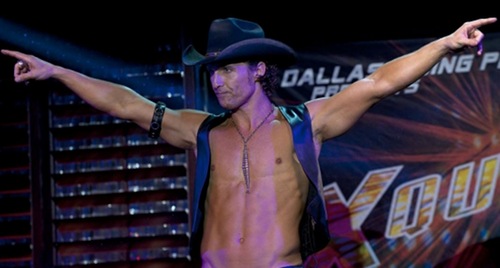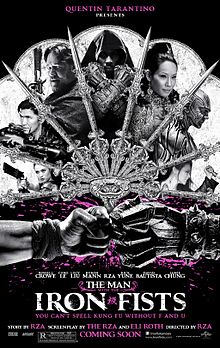The League of Extraordinary Gentlemen: Century 2009 (Top Shelf, $9.95)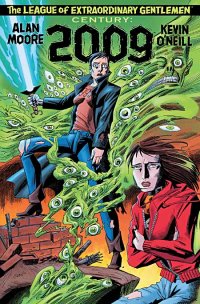
By Adam Prosser
Whether you’re a defender or a critic of him, there’s no question: Alan Moore is a cranky old man. And I say, Glycon bless him for it. A lot of creative people churn out their best work when they enter into cranky-old-man-hood (regardless of their physical age); Moore’s been there since V For Vendetta at least. When The League Of Extraordinary Gentlemen stopped being a simple adventure romp packed with literary references and became a sweeping metacommentary on pop culture, with the news that it would be taking things up to the present day (more or less), it was inevitable that the result would be a screed against The State of Modern Culture and These Kids Today and Get Off My Lawn. Of course, by his own admission, Moore is not that plugged into what’s going on with modern culture, with a few odd exceptions (like his much-touted love for The Wire), which opens him up to the inevitable charges of criticising what he doesn’t understand. You’re going to be reading an awful lot of reviews (maybe you already have) criticising Moore for this very thing in the wake of LoEG: Century 2009. But personally…I think that if 2009 is intended primarily of a critique of modern pop culture, it’s a surprisingly tame one, even if there are some fist-waving moments.
Orlando, recovering from a particularly traumatic tour of duty in the middle East, switches genders again and arrives in London. Here zhe’s accosted by a particularly cranky Prospero, reaching out from the blazing world (again, bear in mind that Prospero seems to be Moore’s own avatar in the series, so I assume we’re supposed to read into his bad mood) and accosted with reassembling the League one final (?) time, despite the lateness of the hour. The Moonchild, the Antichrist who evil occultist Oliver Haddo has been attempting to create since the beginning of the 20th century, has been born and ascended to power. Meanwhile, Alan’s a homeless addict and Mina’s been locked in a mental institution for decades. Things look bleak…but in this dystopian year of 2009, it’s possible even the antichrist could be a disappointment.
The thing about LoEG is that, like a couple of Moore’s other projects (most notably Promethea), it began as a fun, smart-but-breezy adventure romp but evolved into something far more ambitious and esoteric. As a result, Moore’s priorities have shifted. On the one hand, the comic has arguably found a lot more to say…but on the other, it’s no longer about “fun”, and even what would seem to be the central premises of the story have fallen increasingly by the wayside. Moore’s greatest strength has always been his ability to juggle moments of “awesome” and the basic demands of an exciting narrative with much more complex ideas; to this day, there are still plenty of people who don’t “get” Watchmen (arguably, an awful lot of them work for DC comics) but enjoy it for its superficial virtues, of which there are many. Moore’s comics tend to be tremendously entertaining, so that when he makes that a lower priority and focuses more on challenging the reader, the results can sometimes be disappointing at first blush.
What I’m saying is that what started as, in a sense, the ultimate team-up comic is no longer about that. If you’d told me, after the first couple of volumes, that there was going to be a LoEG comic set in 2009, I’d have visions of Harry Potter teaming up with Edward Cullen, Robert Langdon, and Buzz Lightyear to defeat the smoke monster from Lost, or something (and admittedly such a team-up, by its very existence, probably would have made a lot of the same satirical points about the decline of culture Moore attempts here). But Moore’s telling a different kind of story now, one that, among other things, has fixated on his protagonists of Mina, Allan and Orlando and their struggles with immortality, and that’s pushed the pop culture references into the background. Harry Potter does indeed show up, though like a lot of characters who make an appearance in LoEG he’s mutated beyond all recognition, partly to avoid rights issues and partly so he can embody Moore’s crankiest arguments about nasty ol’ modern culture. (Harry is, as you may have already guessed, the antichrist in question, an avatar of ignorant youth and a lack of imagination—it’s pretty obvious Moore’s not a fan.)
Of course, this does lead to a final showdown with another pop culture character, one that’s legitimately clever and works on multiple levels. There are enough of these lingering “OK, that’s awesome” moments in 2009 to satisfy the thrill-seeking comics fanboy in me, yet I can’t help but feel that this series has lost its way a little. It honestly seems like there’s a lot more Moore and Kevin O’Neill could be ranting against, particularly in regards to how more and more of our “creative real estate” is being locked up by big corporations, and how this process is forcing pop culture into an endless spiral of franchises, reboots, prequels, and so on. I’d never come down on a comic for trying to evolve into something grander, even if I loved it the way it was before, but for the first time I feel like Moore and O’Neill’s larger points are surprisingly banal and simplistic. Though, given their attitudes towards pop culture, maybe that’s the point.
Rating:





Out of a Possible 5 Stars
 Get Jiro! (Hardcover, $24.99, Vertigo)
Get Jiro! (Hardcover, $24.99, Vertigo)
by Graig Kent
In the near-ish future sports, cinema, and entertainment as we know it has all died (except, naturally, porn). Food has become the dominant pop culture. Chefs are the new superstars, and, in the city of Los Angeles (or someplace like it), the new crime lords, controlling the distribution of raw ingredients, choking out the small restaurants on the city perimeter, keeping the glory and prestige clearly focus on The Center. In this case, there’s two particular crime lords/master chefs dominating the scene: Rose, a violently vigilant locally sourced vegan and Bob, as much a businessman as a creator of the finest meals at any expense, and at any cost.
When an Outer Ring sushi chef chops off the head of the foremost produce distributor (you just can’t mix your wasabi with your soy sauce, man), he draws immediate attention to himself, but the discourse is less of his murderous deed and more of his exquisite preparation and presentation. Jiro (I suspect named after famed sushi master Jiro Ono, the subject of the documentary Jiro Dreams of Sushi) becomes the most wanted man in L.A., with both Rose and Bob willing to go to any lengths to bring him into their fold. Jiro is of his own mind and merely wants to practice his craft in peace. Hints of a darker past in Japan waft to the fore, and it’s quickly understood that Jiro will fight for his peace if he has to and is not afraid to square off against the two largest crime syndicates in town (and acts very much in a manner like he’s done this before).
It’s all too easy to forget what makes comics special when film and television (and even the internet) can create product that can replicate the spectacle and/or intimacy that was once the sole domain of the comic book artist. But it’s something like Get Jiro! that reminds you why comics are still not only relevant, but necessary… the ability to produce something that you won’t get anywhere else.
Get Jiro! isn’t a unique story, per se. There have been dozens of films where one protagonist faces off against one or two criminal empires and single handedly brings them down (Lucky Number Slevin, for but one weak example that came to mind. Quick, Chewers, gimme 20 more), but none have ever been so, well, food-porny about it. This, absolutely, is a niche product. It takes its queues from samurai films, crime dramas, speculative fiction and, yes, the Food Network. The story so frequently gets lost in the details of food, food preparation, dining etiquette, cutting utensils and other such kitchen culture that there’s really no way any other medium would back an untested genre like this, and they’d be right to have reservations, because of the foodies who watch Food TV like it’s religion, how many are there that are keen for beheading and dismemberment to be thrust in the mix. Yet in comics, this kind of genre mixing is a perfect fit. The audience may be small but the platform allows for limitless imagination.
On top of that, the marquee name on the book happens to be one of the biggest names responsible for helping food culture emerge from its shell. Anthony Bourdain is a superstar of the foodie community, author of Kitchen Confidential, a memoir that exposed the rather unseemly underbelly found in even the most upscale of restaurants. He’s the star of two highly successful television programs that combine both food and travel, and has a passion for crime stories, having authored a few crime novels. Given his professional pedigree, there’s really no one else out there I could think of who could authentically pen a book like this. Bourdain’s obvious knowledge and experience in kitchen culture is essential to the establishment of this story’s otherwise ludicrous conceit. It’s his world experience and his own obsession with food and food preparation that fuel the best moments of the book, those quieter asides that get to the heart of what makes food more that just sustenance, but an experience. No doubt it’s also Bourdain’s longstanding affection for crime stories and genre films that provides the trappings for all this to happen.
It is the crime element that is the weakest link in Bourdain’s repertoire, as he, with co-writer Joel Rose, are so narrowly focused on Los Angeles that we don’t get a sense of the larger corrupting influence of this food culture-obsessed society. As well the two criminal empires of Bob and Rose don’t flex their muscles enough to really get of sense of how powerful or influential they can be (their running crews seem kind of small). Yet, it is this crime framework that allows for the remaining splendor to happen, such as the scene where a thug marvels over Jiro’s technique after severing his compatriot’s arm like a baseball fan would obsess over a batting stance, and the wonderfully cinematic climax where Jiro battles a bevvy of bad guys in a wheat field… on the top floor of a vertical farm (straight outta Popular Science!).
The book, as rich as it is in dialogue flourishes, would die a brutal death if the wrong artist were involved. But Langdon Foss, paired with colorist Jose Villarrubia, have produced some of, if not the most exquisite looking food in comics, ever. The level of attention, care and detail with which Foss and Villarrubia put into the not just the visual presentation of the food, but also the preparation sequences is beyond amazing. It’s captivating, stunning and mouth-watering at the same time. Foss produces highly detailed art with crisp, clean lines, taking obvious influence from Moebius but applying it to as realistic a setting as possible, while still retaining a cartoonist’s detachment to minimize the impact of the violence. Villarrubia’s colors cannot be oversold. This is a story that just couldn’t work in black and white and would falter if the colors weren’t true.
It’s not a perfect product, and its target audience is a narrow band of foodies and genre nerds, but for those that are, it is a, pardon my French, fucking delight. It’s an absolute pleasure to read, and a reminder of what comics are here for.
Rating:





Out of a Possible 5 Stars
Fatima: The Blood Spinners ($3.99)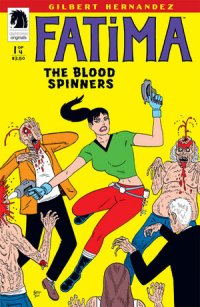
by D.S. Randlett (@dsrandlett)
It’s hard to know what to make of this first issue of Fatima. Gilbert Hernandez has long been known as a “serious” creator, trucking largely in nuanced characters and deeply felt stories. When I saw the cover to this new series, which features the title’s busty heroine blowing away some zombies in a particularly bloody fashion, I was somewhat taken aback. Reading the contents, it is hard to tell if Hernandez is parodying action comic books, or is fully embracing his inner Kirby.
Hernandez’s linework has always called to mind the work of Jack Kirby and Steve Ditko, even if his content always hasn’t. Here, he seems to be embracing that side of himself, relishing in some kinetic and cynical Verhoeven-esque action. Fatima herself, who looks very much like Big Barda, has a comically narrow waist and large bust, but her face seems to belong to a completely different person and story than what a first glance at this book would convey. In fact, there seem to be two Fatimas. One who strips down to her skin-tight zombie fighting togs, and another who walks through her city clad in a large trench coat. This second Fatima is drawn and written with quite a bit of care. She’s a character with regrets, and they come through plainly in the artwork.
The book is also violent and fun as hell, if a bit thin. The thinness of the plot is assuaged by a rather unique spin on the zombie genre (but as I write this, it seems somewhat reminiscent of something like the movie Street Trash). In this world, there is a drug called spin. Apparently, it gives the user the high of their life, and then turns them into mindless flesh eaters. Spin use is rampant, and Fatima is a sort of cop whose job it is to both bring in Spin dealers and to (of course) blow away zombies in spectacularly gory fashion.
The main thrust of the story still feels hidden. Upon putting down this issue, one has no idea where the story is going, or what Hernandez really has to say. Instead of building suspense and interest, this feeling leeches the story of any momentum. Fatima is obviously the work of an important creator, but it suffers from an acute sense of first issue-itis. It’s worth checking out, but it will most likely read better when it’s collected.
Rating:





Out of a Possible 5 Stars
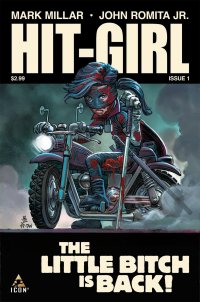 Hit-Girl #1 (Marvel Icon, $2.99)
Hit-Girl #1 (Marvel Icon, $2.99)
By Jeb D.
I’ve seen this new Hit-Girl series referred to as the Empire Strikes Back of the Kick-Ass comics, and I guess I can see that: based on one issue, it’s a bit more character-focused than its predecessor, and trades some of the original’s “gee-whiz!” for a more measured approach. The major difference (well, apart from the original Star Wars films being a kind of magic, while the Kick-Ass comics are a kind of sensationalization of violence and nerd self-loathing) is that we went into Empire not knowing what would come next—and, indeed, we left it the same way, but with even more heightened anticipation. We (well, those of us with high enough tolerance for pain to have read Kick-Ass 2) come to Hit-Girl knowing pretty much everything: we know that, when the series ends, Mindy and Dave are still kicking, punching and slicing; we know that Red Mist has shaped himself into a true super-villain; we know that the superhero “movement” has burgeoned; we know that the Mob still exists. I don’t know quite what we call this-a “midquel”?-but lacking both the sense of discovery of an origin story, and the open-endedness of an ongoing, we’re kind of hanging around watching Millar and Romita fill in gaps that we barely noticed till they brought them up.
Mindy’s having trouble adjusting in school? She’s not popular with the “in” girl clique? Um… OK… and Dave/Kick-Ass is where she’s taking “cool” lessons? Well, you can see that right off the bat that Millar and Romita have taken this installment of the Kick-Ass saga into the realm of outright fantasy. I know that the genesis of the first series was a little wonky, with Millar still writing the ending while Vaughn and Goldman were taking the film script in different directions, but on the comics page, this is still the same Dave Lizewski who didn’t get the girl in the first series. Maybe it’s supposed to signify Mindy’s developmental retardation, but her agreeing to swap training regimens with Dave (she’ll teach him to really kick ass, he’ll teach her to be cool and accepted), feels wildly at odds with the perceptive intelligence that Millar, Vaughn, and Goldman brought to the character.
Because the aspect of the bleed from comic to film and back again that is this series’ greatest asset has been the influence of Chloe Grace Moretz’ deft, empathetic performance as the film’s Hit-Girl; it not only informs Millar’s treatment of the character today, but enhances the re-reading of her original comics appearance. Mindy comes to value Dave for the core goodness she sees in him, not as a source of updated pop-culture references (to say nothing of the fact that no high-school boy–even a “cool” one–is going to be an ideal source for parsing the behavior of teenage girls). I get what Millar is trying to do here– this “I’ll help you with your problem, you help me with mine” is the kind of convention you might employ in a rom-com–but the Mindy Macready we’ve met up to this point, in both comic and movie, has a creepily preternatural ability to read men, and she knows Dave better than this.
Apart from that main storyline, we see the convergence of the film and comic versions of Mindy’s family, and a glimpse of how Red Mist begins assembling the villainous team we’ll meet in Kick-Ass 2. Again, it’s of academic interest for the detail-oriented, if not exactly compelling.
There’s not much to say about the art, as Romita could do this strip in his sleep by now: unlike his work on books like Avengers, there’s not a ton of color or variety in the characters or settings of the Kick-Ass “universe”, but he does what he can, and this issue is executed efficiently and effectively, with inks and finishes again by Tom Palmer, and colors from Dean White and Michael Kelleher.
Those who are deeply invested in the world of Kick-Ass won’t want to miss this… but since I’ve never actually met anyone like that, I will simply say that most readers can give this one a pass.
Rating:





Out of a Possible 5 Stars
Aquaman #10 ($2.99, DC)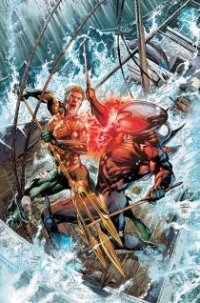
by D.S. Randlett (@dsrandlett)
I’ve never known what to make of Aquaman. I came of age during a time when the guy had a beard and a hook hand, and even when he returned to his original look he was still kind of a hard ass. All of this was a far cry from the character from Superfriends that everyone made fun of: the goofy blond guy who talked to fish. I have no idea how faithful Geoff Johns’ take on the character is to past iterations, or how he stacks up against them, but there’s been a feeling of pleasant easiness to his run on Aquaman thus far.
This Aquaman seems to be cut from and older pulp hero model than other superheroes, and it feels right. I suspect that this feels so natural because much of Aquaman’s iconography draws upon so much that predates superheroes, and thus Aquaman barely feels like a superhero comic. It feels more like Doc Savage or The Phantom. That alone separates the series from much of Geoff Johns’ output, but then there’s the surprising naturalness that he brings to the relationship between Aquaman and his wife, Mera. The scenes between these two have so far belied a sensitivity to character that I hadn’t suspected Johns to be heretofore capable of, and it’s been one of the central pleasures of this series to date. It also helps that Mera is a strong character in her own right and is not dependent on Aquaman to generate interest in her. Hell, she’s probably a badder ass than he is.
The series has also featured some career-best work from Ivan Reis. He’s gotten much better at drawing faces, allowing some beneficial cartooniness to mingle with his realism in favor of a heightened sense of expression in his characters. Reis has also found a way to make his style feel briny and aquatic. Even though the book is often focused on land dwelling primates, there’s a sense of detail in his lines that calls forth studies of fish anatomy and the smell of salt.
It’s almost a pity that Aquaman has been picking up its pace recently. I quite liked that ambling gait of the first couple of stories in this series. In the midst of this latest arc, we’ve managed to meet The Others, the team that Aquaman was a member of before he met the Justice League (or so it would appear). A standout among these characters is Prisoner of War, a veteran of either Iraq or Afghanistan who is aided by the ghosts of the men in his detail who were all killed in some sort. He’s a surprising and well designed character in a series that’s had its fair share of surprises.
The Others all possess some sort of Atlantean technology. Why Aquaman gave these people these artifacts remain to be seen, but it seems to be tied to the vendetta between him and Black Manta, an element that came to the forefront of this series with a revelation from last issue’s end. The new central element of the Aquaman/Black Manta conflict is actually a rather deft touch, but it just barely escapes the realm of merely good idea.
I’ve been speaking of this series in rather glowing terms, but we’ve reached a point where the things that are good about this title seem to be working against where Johns wants to take this story. It’s not that his ideas are bad, but they lack the groundwork to really register and feel urgent. Take the revelation at the end of issue 9, which sets the table for the conflict depicted in
issue 10. At its center is a good idea, and a story worth telling, but it lands with a thud because there are no expectations to really weigh against it. It reframes Aquaman’s relationship to Black Manta, but the way that it’s set up doesn’t bring us closer to any of the characters, or make us second guess them. It just sort of… is.
Aquaman is a really well executed series that’s been getting harder to recommend. Not because of any complex continuity issues or lack of quality, but a lack of impact. We’ve had plenty of payoff recently, but it’s payoff without setup, like a punchline without a joke.
Rating:





Out of a Possible 5 Stars
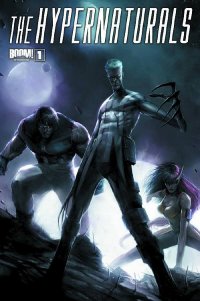 Hypernaturals #1 (BOOM! Studios, $3.99)
Hypernaturals #1 (BOOM! Studios, $3.99)
by Graig Kent
For half a decade, Dan Abnett and Andy Lanning (collectively and colloquially known as “DnA”) were the chief, and frequently sole, architects of Marvel’s Cosmic heroes. While writing two ongoing monthly titles, Nova and Guardians of the Galaxy, DnA would orchestrate an annual epic, from Annihilation: Conquest, to War of Kings, and their endgame, The Thanos Imperative. It was an intricate and impressive run, some of the best space opera comics has ever seen. After the The Thanos Imperative ended, DnA went on to create the Annihilators series of mini-series, but their control of the Marvel Cosmic had been pulled away from them, and the Annihilators suffered for it. With the epic scale removed so too was the excitement. But one also had to wonder if DnA weren’t, perhaps, burned out on the whole Cosmic-scale storytelling.
Well, their creator-owned series Hypernaturals is the response to that question, and the answer is “No, not by a long shot.”
Hypernaturals is DnA at their finest, crafting a grand-scale cosmic superhero story with a heavy sci-fi influence. In short order and with relative ease, DnA establish the world in which the Hypernaturals exist. It’s a future civilization where a segment of the population is gifted with “hyper” abilities. For every generation there is a recruitment of these hypers for the galactic defense team, the Hypernaturals. When the latest team of Hypernaturals disappear, presumed dead, it’s up to a small collective of retirees, administrative staff and rejected recruits to protect civilization.
DnA introduce the characters, build the conflict, and plant the seeds for plenty of ongoing drama and stories all with relative ease. As well, DnA seem to have an innate way of establishing unique alien and/or futuristic societies. For Hypernaturals they have crafted an abundance of terminology and phrases, as well as foreign reference points and technology that further serve in defining the book’s environment.
It wasn’t necessarily a good sign to see two different artist credits on the first issue of this comic; DnA worked with Brad Walker on various Marvel Cosmic project, and it was tantalizing their reteaming for a new cosmic series. Alas, Walker lasts only six pages before handing over duties to Andres Guinaldo (and a team of finishers) but the transition, while not seamless, is also not as jarring as it could have been. Guinaldo, charged with the brunt of establishing the visual presentation of the Hypernaturals world, does a phenomenal job bringing the foreign environments, alien cultures and technology to life. If there’s any major failing to Hypernaturals, it’s the costumes… they are, bluntly, god-awful, but it’s solely restricted to the heroes costumes, as Guinaldo actually brings a unique flair to the “everyday” wear of this society.
After so much goodness in their Marvel Cosmic work, I shouldn’t be as surprised as I am by how successful DnA are at bringing a new, original cosmic series to life. But Hypernaturals works, and works incredibly well. Fans of Legion of Superheroes, Guardians of the Galaxy and superheroic space opera take note.
Rating:





Out of a Possible 5 Stars





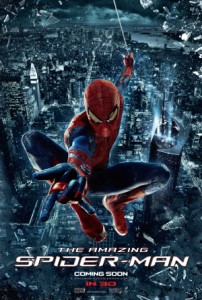 Some bizarre time warp has resulted in another Spider-Man origin story. In today’s film market there’s no room for loyalty or alchemy. This is straight math. The iron was hot, the audience willing, and release slates to fill. As a result there’s a brand new relaunch of a character most audiences know like the back of their hand.
Some bizarre time warp has resulted in another Spider-Man origin story. In today’s film market there’s no room for loyalty or alchemy. This is straight math. The iron was hot, the audience willing, and release slates to fill. As a result there’s a brand new relaunch of a character most audiences know like the back of their hand.









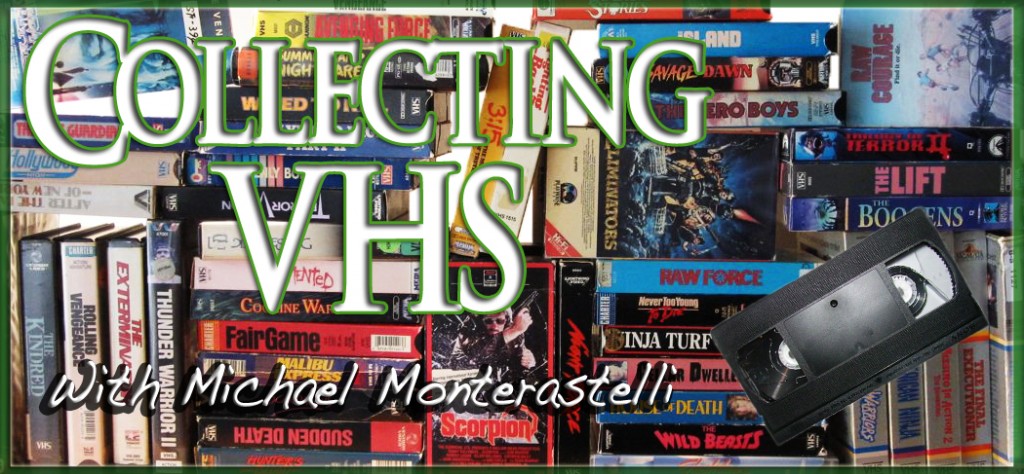
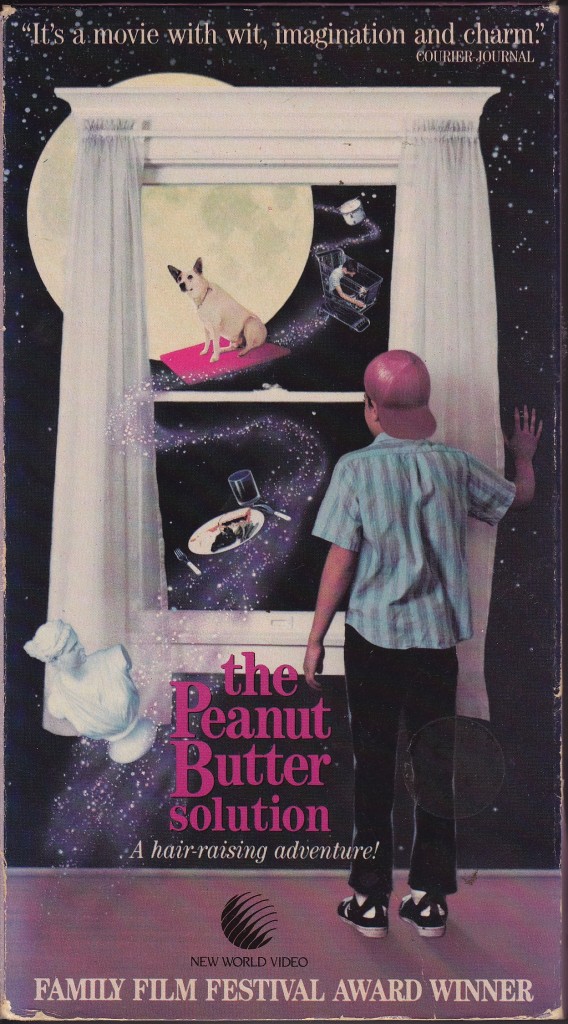
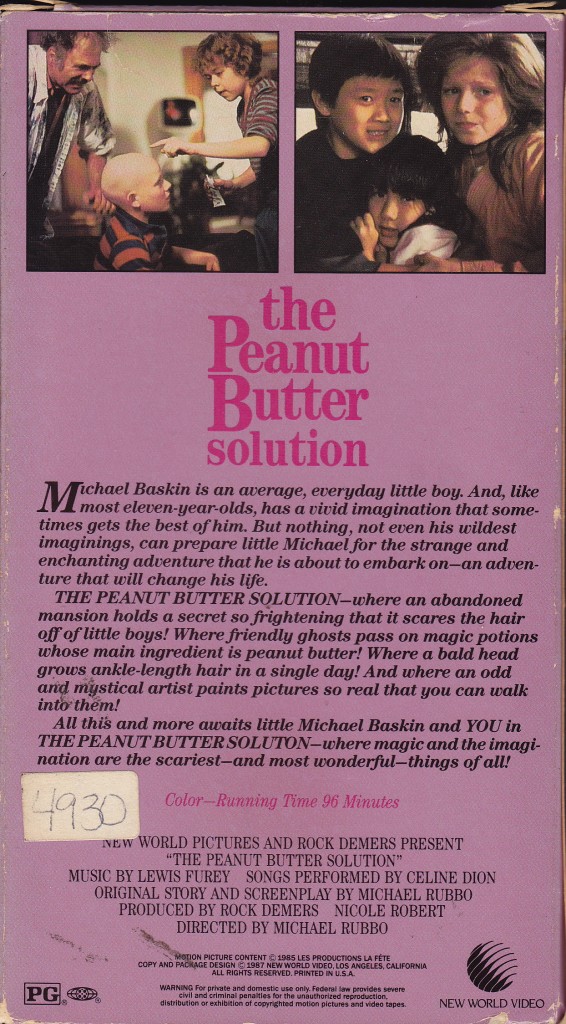
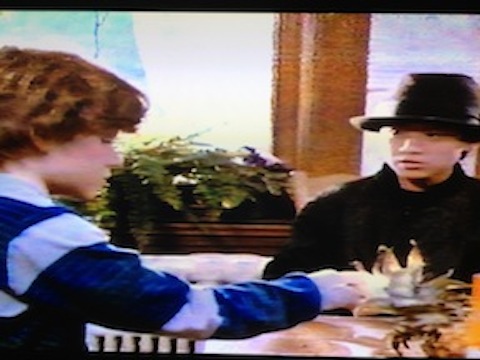











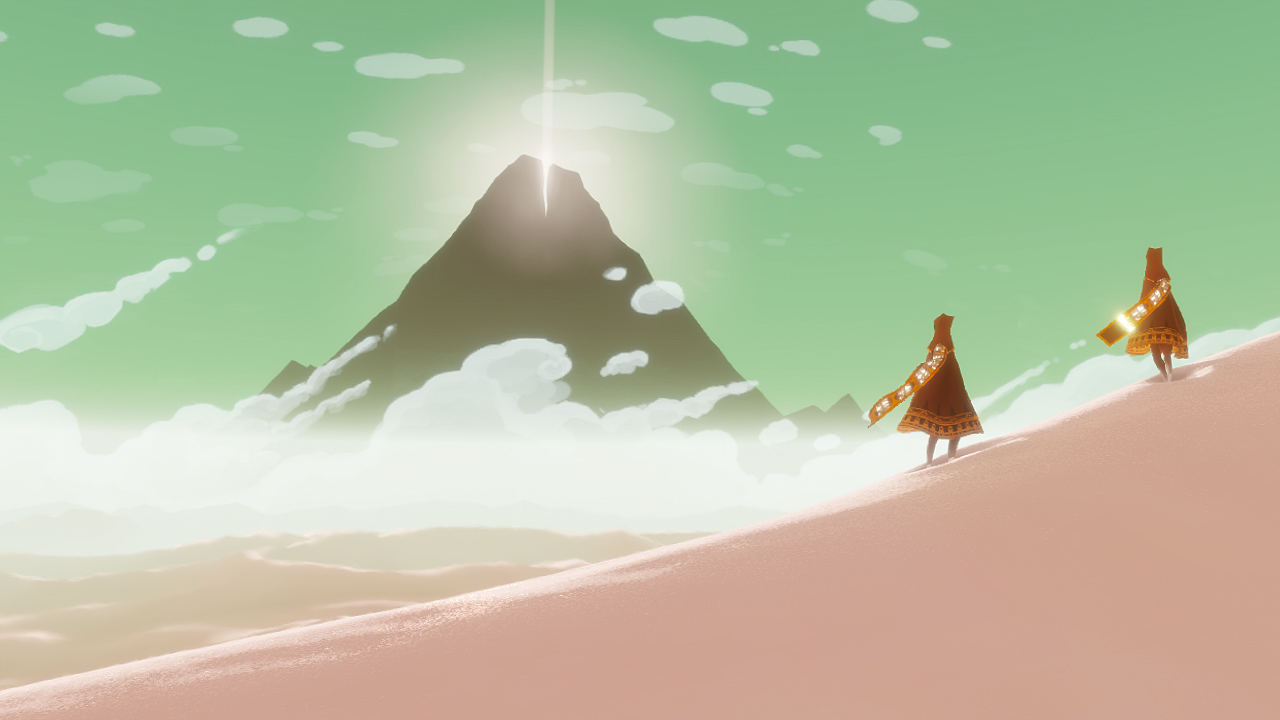
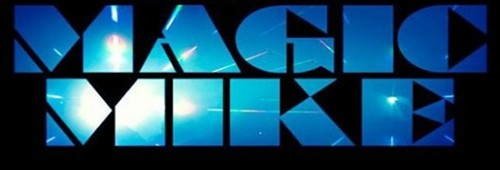
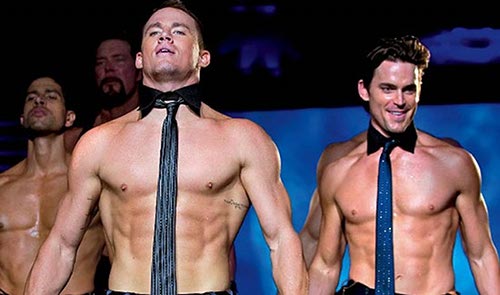
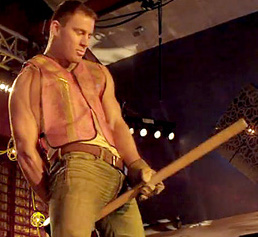 The dichotomy of these dueling convictions is the crux of the film, each man seeking a very different endgame. Soderbergh and screenwriter Reid Carolin infuse Magic Mike with enough life to never make that conceit feel on–the-nose. Mike’s growth is partly inspired by Adam’s straight and narrow sister Paige (Cody Horn), as he sees in her a fresh start. There’s a mutual attraction that’s put off by how Mike makes his livelihood (by exposing his livelihood).
The dichotomy of these dueling convictions is the crux of the film, each man seeking a very different endgame. Soderbergh and screenwriter Reid Carolin infuse Magic Mike with enough life to never make that conceit feel on–the-nose. Mike’s growth is partly inspired by Adam’s straight and narrow sister Paige (Cody Horn), as he sees in her a fresh start. There’s a mutual attraction that’s put off by how Mike makes his livelihood (by exposing his livelihood).